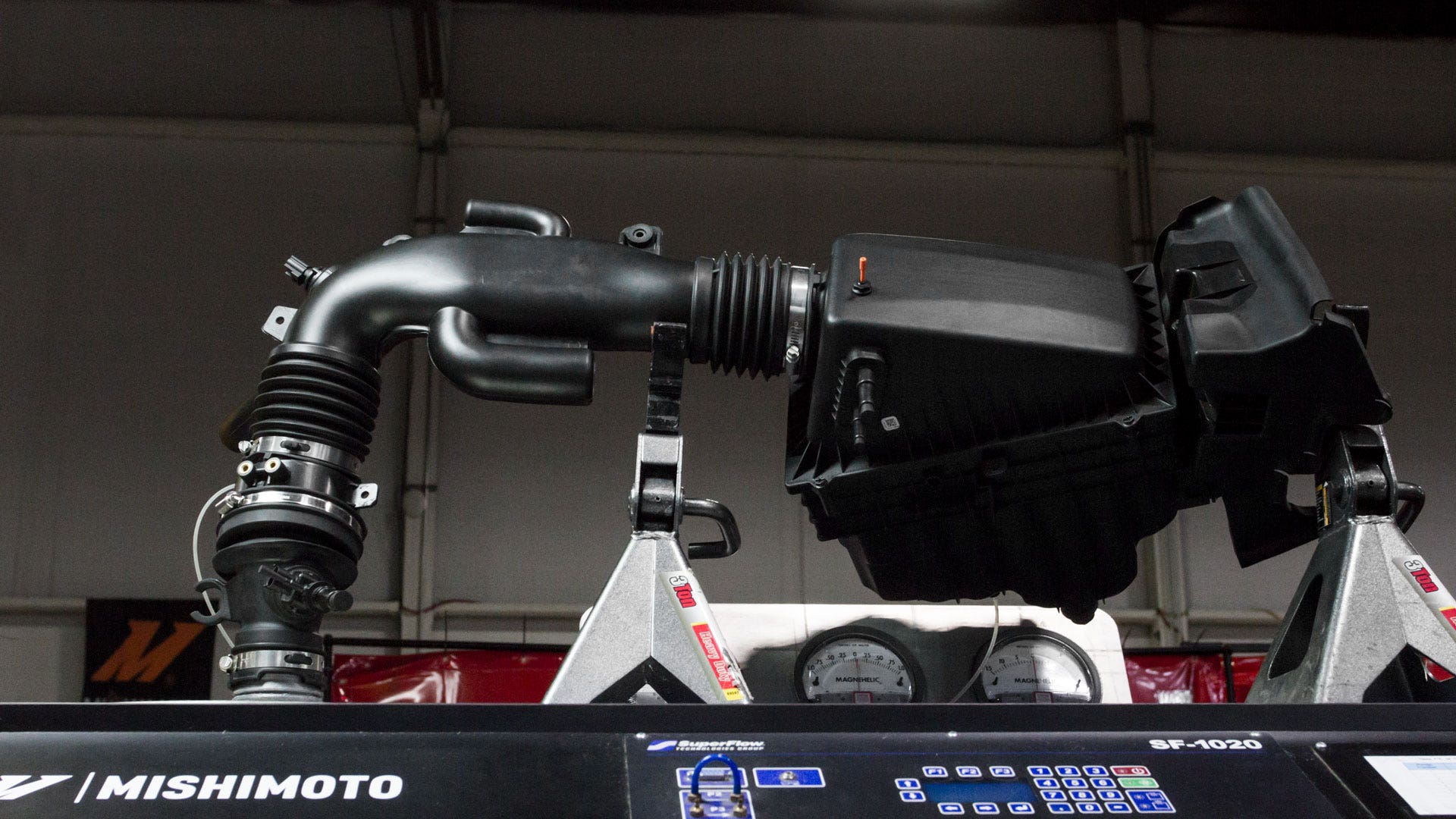
Breathing Fresh Air - Intake R&D, Part 3: Design
We often say that engines are just air pumps. The more
air you can get in and out of them, the more efficient they are, and the more
power they make. While that's true for any engine at its core, computers and
electronic controls tend to complicate the equation. As cars and trucks become
more complex and efficient, the computers controlling them have a hand in
almost every aspect of how they run. Most of those controls focus on how the
engine breathes in through the intake and out through the exhaust.
So, what does that mean for our 2018+ JL 2.0T intake? It
means that "good enough" isn't an option. The sensors attached to the
Hurricane's stock intake and its complex design require precision along every
step of development. It may seem like we're dragging our feet by looking so
closely at the stock intake, but every feature of every component plays a major
role in how the intake functions.
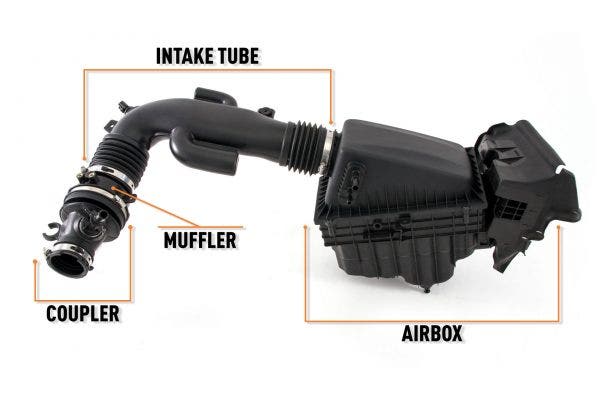
Our first two posts focused solely on the JL's stock intake and at the end of the last post, I said we'd look at our design next. And we will, but first we must take one more look at the stock part. Our study of the stock intake up until now has focused on the outside. We've looked at its overall design and scanned every detail of its shape and home in the engine bay with our 3D scanner. The only remaining facet of the stock intake to study is arguably the most important: how air flows through it.

To measure how air flows through a part, we turn to our
flow bench. This machine is essentially a giant vacuum that pulls air through a
part at a fixed rate. Knowing that flow rate, we can then read the pressure created
by the part. We can then compare the pressure at the inlet and outlet to
calculate pressure drop across the part. Since pressure is the measure of
restriction, less pressure means less restriction and a lower pressure drop
across the part. It sounds counterintuitive, but a lower pressure drop means
higher flow.
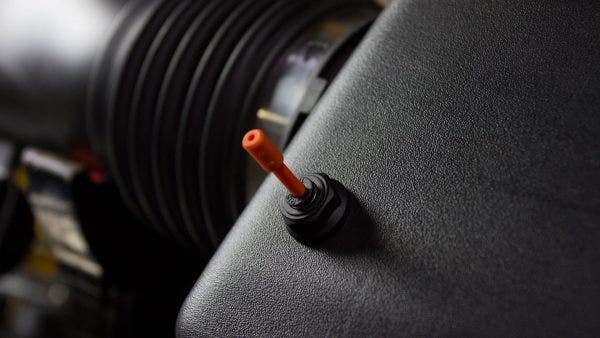
We attached the stock Hurricane intake to our flow bench
and fired it up. Our main goal was to get a reading across the entire intake
system so that we had something to compare our intake to. We also wanted to
take this test a step farther. To do that, our engineer, Ye, placed test ports
on the airbox and before the muffler. These ports would let us measure the
pressure drop across each component to see exactly how they affect flow.
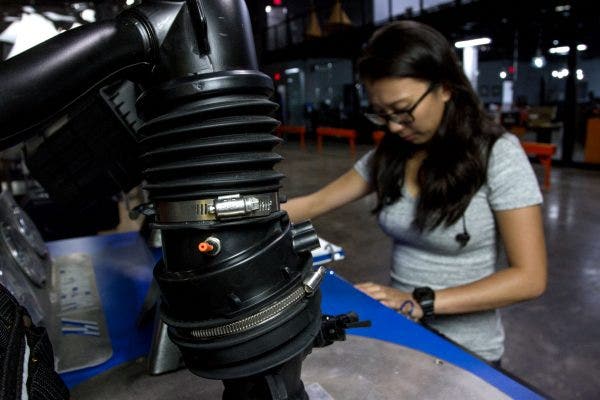
We wanted to test the muffler and the airbox specifically
for one simple reason: they're complicated. The muffler incorporates a mount
for the PCV pressure sensor. We've seen on our F-150 catch can projects that
these pressure sensors can be extremely sensitive to even the slightest change
in flow. The coupler between the muffler and the turbo also houses a heater for
the PCV system. Recreating these two components would be extremely costly, so
if their impact on flow is minimal, we don't want to charge our customers more
money for extra parts that don't benefit them.
The same applies for the airbox. We've found in past
projects that modern engine airboxes are typically over-engineered and often
don't restrict flow enough to warrant changing. We've also found that intakes
without airboxes tend to perform worse than those with airboxes. Without an
airbox, the intake draws in air from the surrounding engine bay. Some of that
air is cold, some is very hot. That inconsistent flow makes it difficult for
the computer overlords to figure out how the engine should be fueled, and
performance suffers. That inconsistent flow can easily trigger a check engine
light as well.
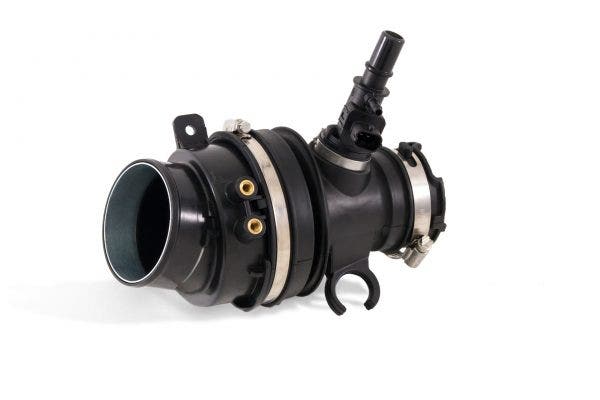
The lower box plays a role in the JL's water fording
ability. A dense filter material over a large opening in the lower airbox
allows a lot of air into the intake when the JL is driving normally. Once the
Wrangler starts fording water, this screen acts as a barrier to keep water out
of the intake. We want to keep the JL's off-road ability intact while letting
in as much cold air as possible. If we can keep the lower airbox without
sacrificing flow, we will.
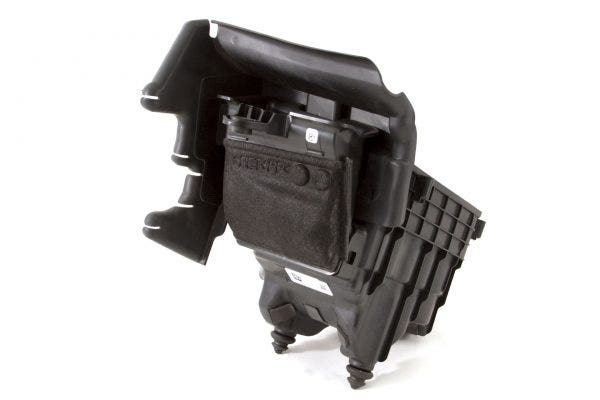
After running the flow bench a few times, we had pressure
drop data for the entire intake as well as the muffler and airbox. While the
overall data isn't very useful to us until we have a prototype to compare, the
data from the muffler and the airbox was useful. Our flow bench test showed
that neither the airbox nor the muffler caused a major restriction in the
intake. Using this data, we were finally able to design our intake. Our
engineer started with a 3D model.
Most of the flow increase for our intake will come from
simplifying and smoothing the main tube of the intake. Removing the three
resonators and increasing the volume of the pipe will help bring more air into
the engine and bring it in faster. To draw in as much clean, cold air as
possible, we'll replace the panel filter with a large, custom-designed
performance filter. The lower box will remain stock and our upper box will bolt
right up to keep the water-fording ability of the stock intake.
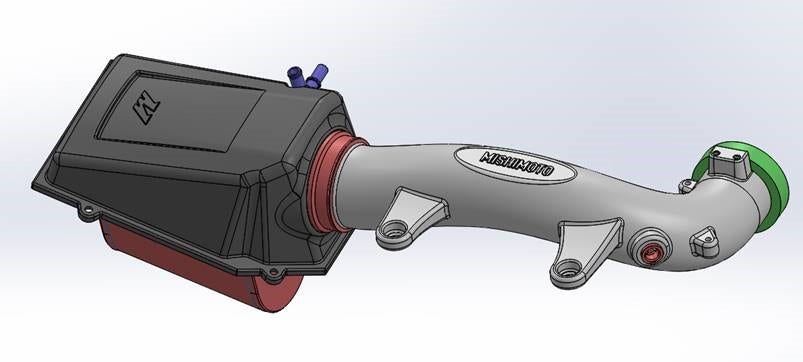
You might also notice that the mount for the PCV pressure
sensor is present on the end of the pipe. Even though the muffler didn't
restrict flow, we want to try replacing it to get some more sound out of the
turbocharged Hurricane. We'll test designs with and without a muffler to see
how they perform and sound.
With our initial design finally created, we can begin prototyping.
In the next post, we'll start the long process of creating components using our
3D printers and old-fashioned hand tools. The sensors will make rapid prototyping
challenging, but with a little patience, our intake should be a big improvement
over stock.




